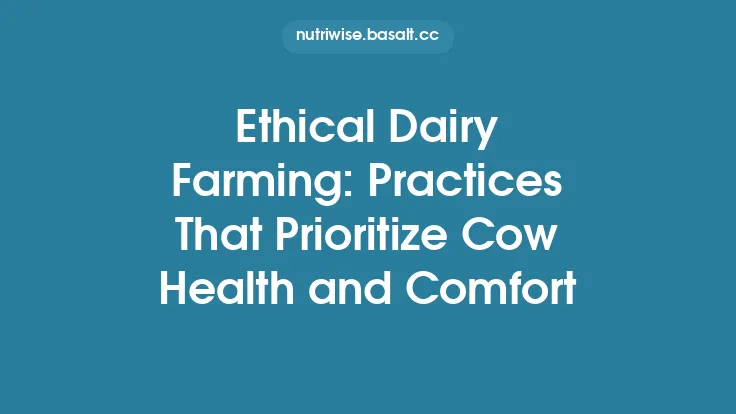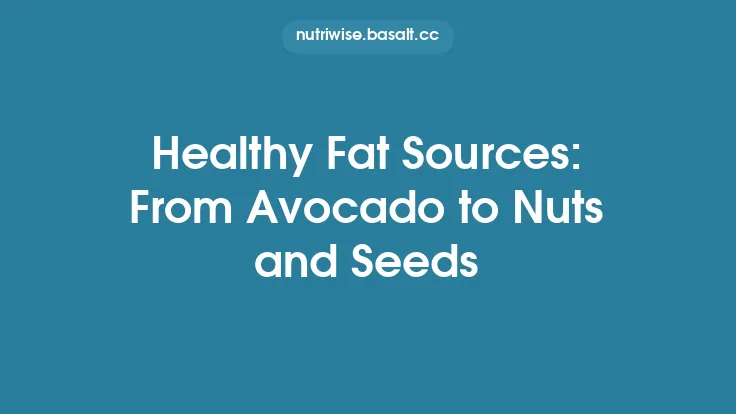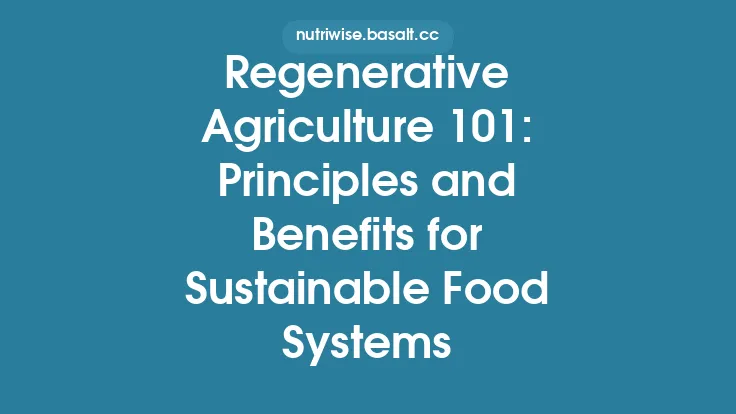Low‑stress handling is a cornerstone of modern, ethical livestock production. By minimizing fear, pain, and frustration during routine interactions, farmers can improve animal health, boost productivity, and enhance overall farm sustainability. This article explores the science behind stress in livestock, outlines practical handling methods, and offers guidance on integrating low‑stress practices into everyday farm operations.
Understanding Stress in Livestock
The Physiology of Stress
When an animal perceives a threat—real or imagined—its hypothalamic‑pituitary‑adrenal (HPA) axis is activated. This triggers the release of cortisol (in mammals) or corticosterone (in birds), hormones that prepare the body for a “fight‑or‑flight” response. While short‑term spikes are normal, chronic elevation can:
- Suppress immune function, increasing susceptibility to disease.
- Impair growth and feed conversion efficiency.
- Reduce reproductive performance (e.g., lower conception rates, longer calving intervals).
- Lead to behavioral issues such as aggression, feather pecking, or tail biting.
Behavioral Indicators of Stress
Farmers can often detect stress before physiological measures become apparent. Common signs include:
- Rapid, shallow breathing or panting.
- Elevated heart rate (detectable via stethoscope or heart‑rate monitors).
- Vocalizations (e.g., excessive mooing, squealing).
- Restlessness, pacing, or attempts to escape.
- Abnormal postures (e.g., crouching, hunching).
Recognizing these cues early enables timely intervention and prevents escalation.
Core Principles of Low‑Stress Handling
1. Predictability and Consistency
Animals thrive when they can anticipate what will happen next. Consistent routines—such as feeding times, handling schedules, and movement patterns—reduce uncertainty and the associated stress response.
- Standardize pathways: Use the same gates, alleys, and loading chutes for each handling event.
- Maintain uniform handling techniques: Train all staff to use the same voice tone, gestures, and touch pressure.
2. Calm Human Presence
The demeanor of the handler directly influences animal behavior. A calm, confident handler conveys safety, while nervousness can be perceived as a threat.
- Body language: Keep shoulders relaxed, avoid sudden jerks, and maintain a low, non‑threatening stance.
- Voice: Speak in a low, steady tone; avoid shouting or high‑pitched commands.
- Movement: Walk slowly, avoid rapid turns, and give animals time to adjust to your approach.
3. Gentle Physical Contact
Physical handling should be purposeful, gentle, and limited to what is necessary.
- Use of proper grips: For cattle, the “low neck” grip (placing the hand under the jaw and supporting the head) reduces the risk of injury and discomfort.
- Avoid excessive force: Excessive pulling or pushing can cause pain and trigger defensive reactions.
- Use of tools: Soft‑rubber halters, padded head gates, and non‑slip flooring can reduce friction and bruising.
4. Environmental Design
The layout and condition of handling facilities play a pivotal role in stress reduction.
- Lighting: Bright, uniform lighting reduces shadows that can be perceived as hiding places for predators.
- Noise control: Minimize loud machinery, sudden alarms, or echoing sounds that can startle animals.
- Flooring: Non‑slip, well‑maintained surfaces prevent slips and falls. Rubber mats or textured concrete are common choices.
- Ventilation: Adequate airflow prevents heat stress, especially in enclosed chutes.
5. Minimal Restraint
Restraint should be used only when absolutely necessary and for the shortest duration possible.
- Quick, efficient handling: Plan the sequence of actions to avoid unnecessary holding.
- Use of low‑stress restraining devices: For example, a “squeeze chute” that gently narrows the animal’s path without crushing.
Practical Low‑Stress Handling Techniques
1. The “Calm Approach” Method
- Observe: Before entering the pen, watch the herd’s behavior. Look for signs of agitation.
- Enter slowly: Approach from the side where the animals are already facing, reducing the need for them to turn.
- Pause: Stand still for a few seconds, allowing the animals to assess your presence.
- Move with purpose: Walk in a straight line, maintaining a steady pace, and avoid sudden stops.
2. The “One‑At‑a‑Time” Loading System
Instead of herding large groups into a chute, guide animals individually:
- Use a “lead rope” or “head gate” to gently steer the animal.
- Reward calm behavior with a brief pat or a small treat (e.g., a grain pellet) to reinforce cooperation.
- Avoid crowding: Ensure there is enough space for each animal to move without pressure from neighbors.
3. Low‑Stress Veterinary Examination
- Pre‑examination acclimation: Allow the animal to stand calmly in a familiar area before handling.
- Use a “squeeze chute” that gently narrows the space, reducing the need for manual restraint.
- Apply topical anesthetic to sensitive areas (e.g., ear tags, dehorning sites) to minimize pain.
4. Gentle Sorting Using “Herding Dogs” or “Shepherding Techniques”
When trained properly, livestock guardian dogs can move animals with minimal stress:
- Select calm, well‑trained dogs that respond to handler cues.
- Avoid aggressive herding breeds that may cause panic.
- Combine with low‑stress human cues (e.g., hand signals) for a coordinated approach.
Integrating Low‑Stress Handling into Farm Management
Training and Education
- Standard Operating Procedures (SOPs): Document each handling step, emphasizing low‑stress principles.
- Staff workshops: Conduct regular hands‑on training sessions, using video analysis to provide feedback.
- Certification programs: Encourage participation in recognized low‑stress handling courses (e.g., Certified Low‑Stress Handling Technician).
Monitoring and Evaluation
- Behavioral audits: Periodically assess animal behavior during handling events using a scoring system (e.g., 1 = calm, 5 = highly stressed).
- Physiological metrics: Collect baseline cortisol levels (via blood, saliva, or fecal samples) and compare post‑handling values.
- Productivity indicators: Track weight gain, feed conversion ratios, and reproductive performance to gauge the impact of low‑stress practices.
Continuous Improvement
- Feedback loops: Encourage staff to report observations and suggest refinements.
- Technology integration: Use video surveillance, motion sensors, and automated gates to reduce human‑induced variability.
- Benchmarking: Compare farm data with industry standards and peer farms practicing low‑stress handling.
Case Studies Illustrating Success
Dairy Cattle Herd in the Midwest
A 300‑cow dairy implemented a low‑stress milking routine:
- Changes: Introduced a “calm entry” protocol, installed soft‑rubber flooring in the milking parlor, and trained staff in gentle neck handling.
- Results: Milk yield increased by 4 % per cow, somatic cell counts dropped by 15 %, and incidence of mastitis decreased by 20 % over a 12‑month period.
Free‑Range Broiler Operation
A 5,000‑bird free‑range broiler farm adopted low‑stress catching methods:
- Changes: Switched from manual catching to a “low‑stress conveyor” system that gently guides birds onto a moving platform.
- Results: Mortality during transport fell from 0.8 % to 0.2 %, and average live‑weight at processing rose by 2 %.
Frequently Asked Questions
Q: Does low‑stress handling increase labor costs?
A: Initially, training and equipment upgrades may require investment. However, reduced animal injuries, improved productivity, and lower veterinary expenses typically offset these costs over time.
Q: Can low‑stress techniques be applied to all species?
A: Yes. While specific methods vary (e.g., handling pigs versus sheep), the underlying principles—predictability, calm presence, gentle contact—are universal.
Q: How do I measure stress without invasive testing?
A: Behavioral scoring, heart‑rate monitors, and infrared thermography (which detects surface temperature changes associated with stress) are non‑invasive alternatives to blood sampling.
Looking Ahead: The Future of Low‑Stress Livestock Management
Advancements in sensor technology, artificial intelligence, and robotics promise to further reduce human‑induced stress. Automated gating systems that respond to animal movement patterns, real‑time stress monitoring via wearable biosensors, and virtual reality training modules for handlers are emerging tools that will make low‑stress handling the default standard across ethical farms.
By embracing these practices today, producers not only safeguard animal welfare but also build resilient, profitable operations that meet the growing consumer demand for responsibly raised food. Low‑stress handling is more than a technique—it is a philosophy that aligns animal health, farmer well‑being, and environmental stewardship into a harmonious whole.





